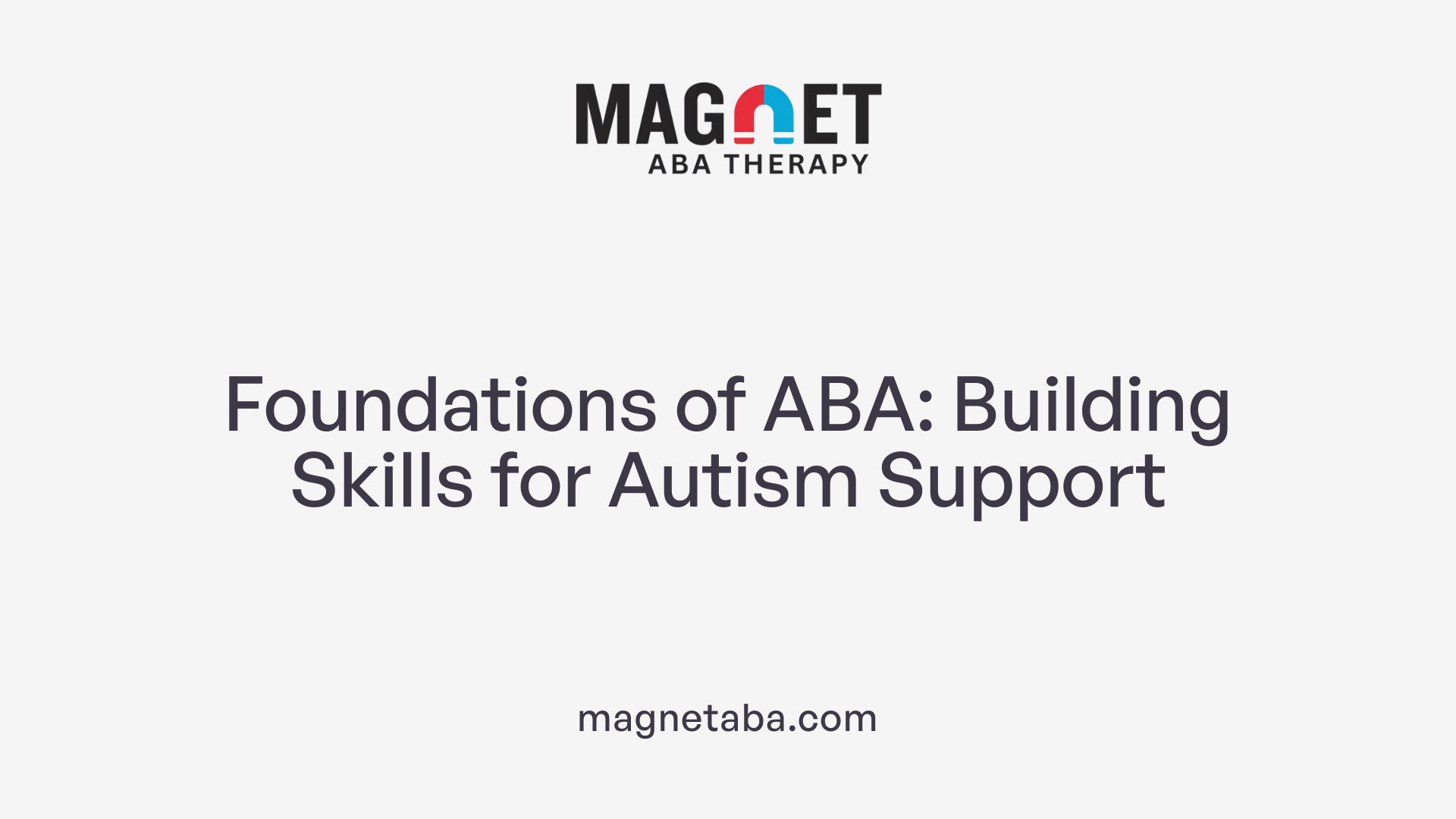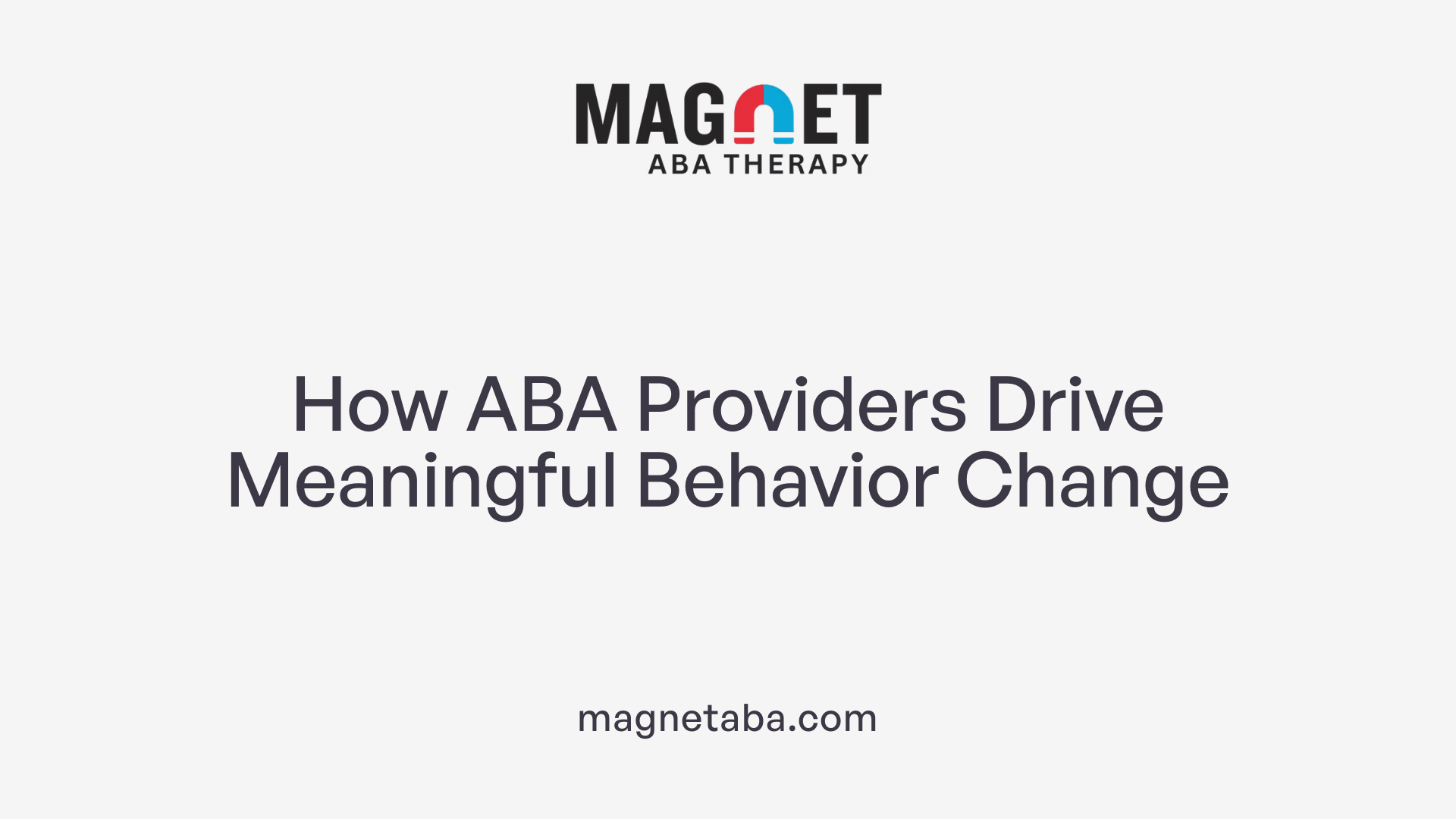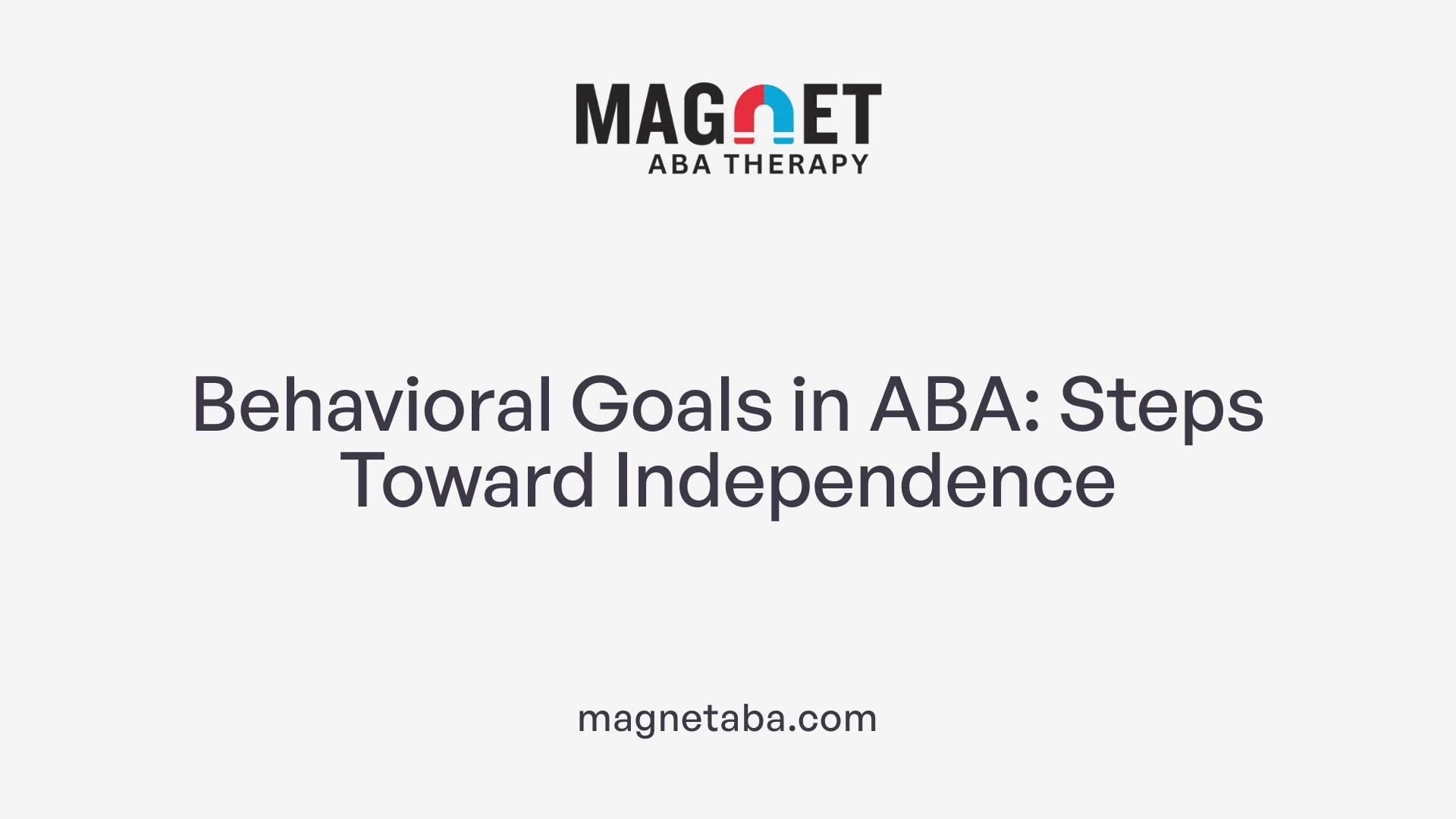Understanding the Foundation: What is ABA Therapy?
Applied Behavior Analysis (ABA) therapy is a scientifically validated approach widely used to support individuals with autism spectrum disorder (ASD). Central to ABA is the use of reinforcement strategies, especially positive reinforcement, to teach essential skills, reduce challenging behaviors, and empower individuals towards greater independence. This article explores how ABA therapy begins with external reinforcement and strategically transitions children towards intrinsic motivation, fostering long-term growth and self-sufficiency.
Foundations of ABA Therapy and Its Role in Autism Support

What is ABA therapy and how is it used to support individuals with autism?
Applied Behavior Analysis (ABA) therapy is an evidence-based approach that studies how behavior is influenced by environmental factors. It uses carefully designed techniques like positive reinforcement, prompting, and systematic data collection to encourage desirable behaviors and reduce challenging ones. ABA primarily supports individuals with autism spectrum disorder (ASD) by teaching essential skills in communication, social interaction, and daily living.
Core methods and goals
The therapy employs strategies tailored to each child's unique needs. Positive reinforcement, which involves immediately rewarding positive behaviors, is central to ABA. This can include verbal praise, giving access to favorite items, or engaging in preferred activities, all personalized to the individual. Reinforcement techniques like differential reinforcement, token economies, and naturalistic teaching encourage skill use in real-world settings. The overarching goal is skill generalization across environments—home, school, and community—ensuring learned behaviors become part of everyday life.
Individualization of treatment plans
Treatment plans are thoughtfully developed by professionals such as Board Certified Behavior Analysts (BCBAs). These plans consider the child’s learning style and preferences, ensuring strategies resonate effectively. Therapists also work closely with parents, providing training to promote consistent reinforcement across different settings, which strengthens outcomes.
Evidence-based impact on language and social skills
Research consistently supports ABA’s ability to drive meaningful improvements in language development and social skills. Positive reinforcement has been shown to sharpen focus, improve communication, and reduce challenging behaviors in children with ASD. These outcomes empower individuals to gain autonomy and better engage with their communities. Gradual schedule thinning of reinforcement also promotes independence by transitioning from continuous to intermittent rewards, helping skills to endure without constant external prompts.
The Role of Positive Reinforcement in ABA Therapy

What is Positive Reinforcement in ABA Therapy?
Positive reinforcement in Applied Behavior Analysis (ABA) is the process of adding a positive stimulus immediately after a desired behavior to increase the likelihood that the behavior will occur again. Examples include verbal praise, giving tangible rewards, social encouragement, or allowing access to preferred activities. For instance, a therapist might praise a child for making eye contact or offer a favorite toy when the child follows a direction.
How is Positive Reinforcement Different from Bribery?
Unlike bribery, which involves offering something before or during a behavior to persuade it, positive reinforcement happens only after a desired behavior has occurred. This timing is crucial because bribes can sometimes confuse the learning process or reduce intrinsic motivation, while positive reinforcement strengthens the connection between the behavior and its rewarding consequence.
How is Positive Reinforcement Customized to Individual Preferences?
Therapists tailor reinforcement strategies to each child's unique preferences and learning style. Some may respond best to verbal praise, others to tangible rewards or access to preferred activities. Methods such as differential reinforcement, token economies, and naturalistic teaching ensure that reinforcement is meaningful and motivating for the child, promoting engagement and better learning outcomes.
What Are the Benefits of Positive Reinforcement in ABA?
Positive reinforcement is scientifically backed for enhancing communication skills, improving focus, and reducing undesirable behaviors in children with autism spectrum disorder. By consistently rewarding positive behaviors, ABA therapy fosters skill development that generalizes across settings like home and school. This approach empowers children to learn and thrive in real-world environments.
How ABA Therapy Providers Facilitate Behavior Change

Who typically provides ABA therapy services?
ABA therapy is delivered by a team of specialized professionals trained in applied behavior analysis techniques. Board Certified Behavior Analysts (BCBAs) lead the design and oversight of each individualized treatment plan, while behavior therapists and technicians implement daily interventions. These experts use evidence-based methods to address the unique needs of each child.
Importance of individualized treatment plans
Every child's learning style and preferences are different, making tailored treatment plans essential. ABA providers develop personalized strategies that incorporate reinforcement techniques fitting each child's motivations. Customization ensures interventions are effective at encouraging communication, social skills, and independence.
Settings for delivering ABA (home, clinic, school)
ABA therapy is flexible and can be administered across multiple environments. Sessions occur in the child's home, clinics, and school settings to promote skill generalization. Delivering therapy in natural environments helps children apply learned behaviors to real-world situations.
Family involvement and training
Parents and caregivers are integral to ABA success. Providers train families to reinforce positive behaviors consistently outside of therapy sessions. This support strengthens the child's progress and fosters independence.
Accreditation and standards ensuring quality
Many ABA providers hold accreditation from organizations like the Behavioral Health Center of Excellence (BHCOE). This ensures adherence to high standards in clinical practice, ethical care, and ongoing professional development. These quality measures contribute to effective, safe treatment.
Behavioral Goals in ABA: Pathways Toward Independence

What behavioral goals does ABA therapy aim to achieve for individuals with autism?
ABA therapy targets a broad spectrum of skills to support individuals with autism in becoming more independent and engaged. These goals include enhancing communication abilities, improving social interactions, and developing daily living skills such as dressing and toileting. Additionally, ABA focuses on academic skills where appropriate.
How does ABA promote these skills?
ABA uses positive reinforcement, which involves delivering praise, tangible rewards, or access to favored activities immediately after a desired behavior. This encourages the repetition of helpful behaviors. Shaping is also employed, where complex behaviors are broken down into smaller steps that are taught gradually. Naturalistic teaching strategies embed learning opportunities within everyday activities and environments to promote real-world application.
What role does skill generalization play?
Skills learned in ABA therapy are practiced and reinforced across different settings—home, school, and community—to ensure that behaviors transfer beyond therapy sessions. Parents receive training to maintain consistency in reinforcing positive behaviors, which helps generalize skills and supports a smoother integration into daily life.
Examples of behavioral objectives
Some common objectives include:
- Improving expressive language for requesting needs
- Following daily routines independently
- Sharing and turn-taking during social play
- Enhancing focus and reducing disruptive behaviors
Why is fostering independence and quality of life important?
ABA strives not just to teach new skills but to empower individuals with autism to thrive socially and functionally. Through systematic teaching and reinforcement, individuals gain confidence and autonomy, which significantly improve their overall quality of life.
Transitioning from Reinforcement to Intrinsic Motivation: Schedule Thinning and Empowerment

How is reinforcement faded over time in ABA therapy?
In Applied Behavior Analysis (ABA) therapy, reinforcement is not meant to be permanent. Instead, it is gradually reduced through a process called schedule thinning. Initially, behaviors are reinforced continuously, meaning every correct response receives a reward. Over time, therapists shift to intermittent reinforcement, where rewards are given less consistently but enough to maintain the behavior. This fading helps individuals become less dependent on external rewards and promotes self-motivation.
What does moving from continuous to intermittent reinforcement involve?
Moving from continuous to intermittent reinforcement involves strategically spacing out rewards. For example, a child might receive praise and a treat every time they follow a command at first. As they improve, the therapist might only provide reinforcement after every few successful attempts or after longer intervals. This approach strengthens the behavior because it mimics real-world situations where rewards are not always guaranteed.
How does ABA encourage independence and sustained behaviors without constant rewards?
ABA therapy aims to help individuals with autism spectrum disorder become independent. By thinning the reinforcement schedule and promoting natural reinforcers — like social praise or a sense of accomplishment — the individual learns to maintain behaviors without needing constant external incentives. This shift enhances intrinsic motivation, enabling skills to persist even when structured rewards are not present.
How is skill generalization supported across different settings?
Skill generalization is a core goal in ABA. Therapists collaborate with parents and educators to ensure that learned behaviors transfer across environments such as home, school, and community. This is achieved by consistent reinforcement strategies tailored to each setting, allowing the child to practice and sustain behaviors in everyday life. Parent training plays a crucial role in reinforcing these behaviors naturally outside the therapy sessions.
What role does parent training and naturalistic reinforcement play?
Parents are integral in reinforcing positive behaviors consistently across all settings. ABA therapists train parents to use naturalistic teaching strategies—like praising a child’s effort during play or daily routines—which helps embed skills into everyday life. This ongoing support fosters continuous learning and strengthens the child's independence.
How does ABA foster intrinsic motivation?
ABA fosters intrinsic motivation by shifting from extrinsic rewards (like tokens or treats) to natural reinforcers and self-satisfaction. As children experience success and positive outcomes from their own behaviors, they become motivated to continue those behaviors for internal rewards such as mastery and social connection. This empowerment is fundamental to ABA's success in promoting long-term growth beyond structured therapy.
Empowering Lifelong Growth through ABA Therapy
ABA therapy lays the groundwork for behavior change by initially using structured positive reinforcement tailored to the individual’s needs. Yet its greater strength lies in the gradual transition towards intrinsic motivation, where learned behaviors become self-sustaining without external rewards. Through techniques such as schedule thinning, skill generalization, and family empowerment, ABA not only improves communication and social skills but also nurtures independence and participation in everyday life. This evolution from reinforcement to intrinsic motivation exemplifies how ABA therapy transforms lives, fostering resilient growth and enduring success for individuals with autism.
References
- On the Bright Side: Positive Reinforcement in ABA Therapy
- Applied Behavior Analysis (ABA): Revealing Positive ...
- ABA Therapy Goals: 25 Practical Examples & Timelines
- Applied Behavior Analysis (ABA)
- Applied Behavior Analysis in Children and Youth with Autism ...
- Applied Behavior Analysis (ABA)
- Applied Behavior Analysis (ABA)
- Applied Behavior Analysis (ABA) for Children With Autism
- Exploring Applied Behavior Analysis (ABA) Therapy












